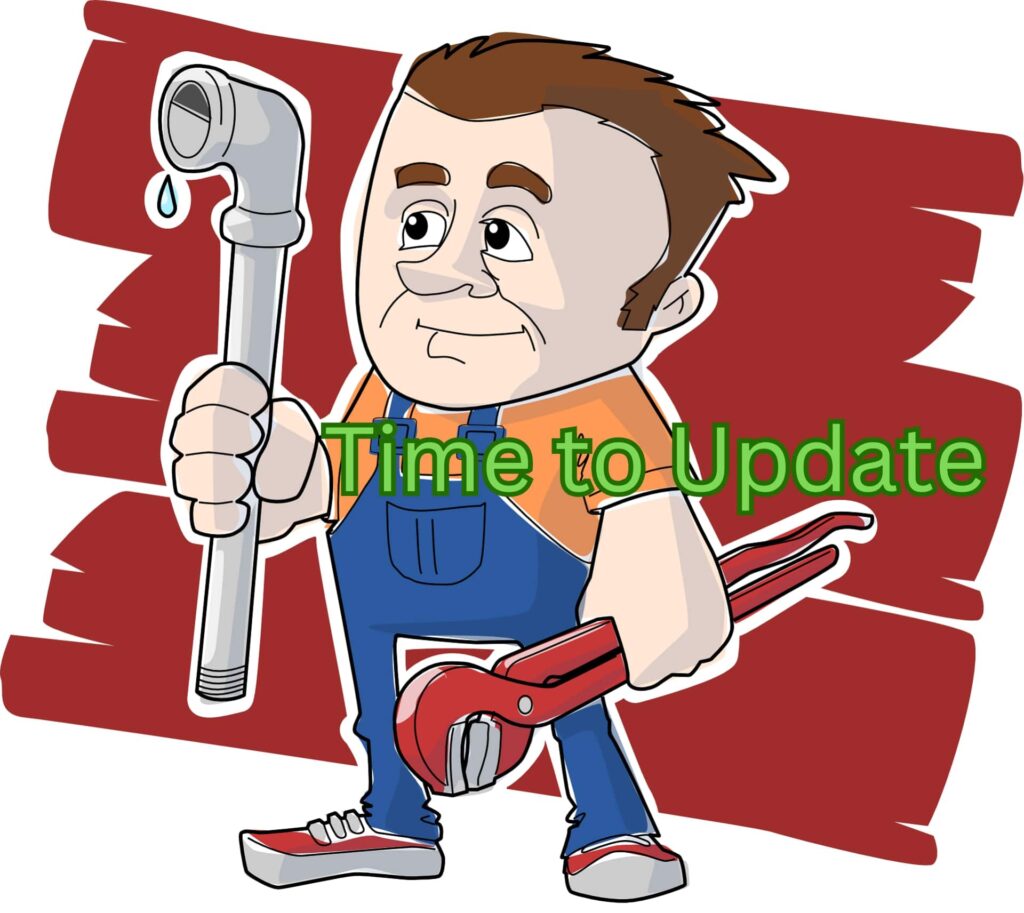Whether you’re a new homeowner or just getting started with basic plumbing projects, understanding some anytime plumbing fundamentals can help you avoid costly issues down the road. Plumbing systems may seem complex, but knowing a few basics can prevent headaches and expensive repairs.
Plumbing needs might never tell you when they are happening. You must understand the basic and easy steps you can take to avoid common beginner errors. By learning a few fundamental guidelines, you can take the stress and uncertainty out of anytime plumbing work, save money on repairs, and feel confident tackling simple fixes and maintenance around your home.
What are the Common Anytime Beginner Plumbing Mistakes

Many simple plumbing emergencies seem easy enough for beginners to take on themselves. However, there are several issues that novice do-it-yourself plumbers often need help with. Learning to avoid these common pitfalls will save homeowners a lot of frustration and expense down the road.
Overtightening connections
One of the most common anytime plumbing mistakes beginners make is over-tightening connections between pipes, fixtures, and fittings. Plastic and metal pipes can crack or fracture if fittings are screwed on with excessive force. Additionally, rubber washers and seals inside fixtures like faucets may become damaged or warped if connections are tightened past the point of proper seal.
When handling plumbing connections, it’s important to use just the right amount of torque to form an airtight and watertight seal. With plastic or copper piping, hand tight plus an additional quarter turn with a wrench is typically sufficient. Protecting water supply and waste lines from leaks requires avoiding the urge to over-crank fittings.
Using the wrong tools
Plumbing projects demand using the appropriately sized and designed tools for each task. Novice DIYers sometimes grab the closest tool without considering if it’s the best tool for the job. This leads to mistakes like using pipe cutters that are too small, causing the blades to crack PVC piping instead of making a clean cut.
Or try to loosen stiff threaded fittings with adjustable wrenches that round over the pipe. Keeping a set of dedicated plumbing tools like basin wrenches, electrical tape, pipe cutters, channel locks, and adjustable pliers optimized for tight spaces will help ensure fittings are correctly installed without damage. Taking a few extra moments to select the right tool makes plumbing work safer and yields better results.
Mixing up wyes, tees, and elbows
Proper placement of drainage fittings is essential to maintain an unobstructed flow. Beginners often need clarification on wyes, tees, and elbows, which can seriously hinder plumbing function. Wyes facilitate merging two pipes at a 45-degree angle. Tees connect three pipes at right angles. And elbows enable 90-degree pipe direction changes.
Installing an improper fitting, like putting an elbow where a tee is required, may cause drain clogs or backup. Taking the time to differentiate these fittings and understand their distinct functions prevents wasted effort from installing the wrong component. Mastering the basics of drainage types and usages pays off in smooth-running plumbing.
Forgetting to put traps on drains
Drain traps are small p-shaped curves of piping that act as the first line of defense against sewer gases entering a home. The trap fills with standing water to form a seal. But beginners occasionally need to remember to install traps, leaving drain lines completely open to toxic fumes from wastewater systems.
Missing traps also allow sewer smells to emanate from drains and plumbing vents. Taking a few minutes to properly connect S- or P-traps under every sink, shower, tub, and basement floor drain outlet is crucial for health and safety. Leaving out this simple component can make an entire plumbing system ineffective.
Not turning off the water
When performing any plumbing repair or replacement work, failing first to shut off the water supply is a mistake that can lead to costly water damage. Novice DIYers sometimes start tinkering with pipes and fixtures while water continues flowing. This makes disassembling fittings nearly impossible and opens opportunities for floods.
Always locate the main shut-off valve and any secondary shut-off valves before beginning a project. It only takes a moment to turn off water, but it prevents headaches down the road. Working on dry plumbing parts is safer and much less messy.
Overusing chemical drain cleaners
While chemical drain cleaners offer a quick fix, over-reliance on these caustic products does more long-term harm than good. Regular use breaks down plumbing components and pipe material over time. The strong chemicals also require extensive safety precautions and can cause injuries if mishandled.
It’s wiser to first try non-toxic remedies like boiling water or a mechanical snake to clear clogs. Save harsh drain cleaners as an absolute last resort, and never pour them down the drain without first flushing thoroughly with water, as residual chemicals can corrode pipes. Less is more where plumbing health is concerned.
Pouring grease or oil down the drain
Grease and oil should never go down the drain, as this is a primary cause of clogs, backups, and expensive drain cleaning bills. When grease and oil cool in pipes, they congeal into hardened blobs that attract other debris. This buildup eventually blocks the flow of wastewater if not cleared.
Novice DIYers sometimes neglect to dispose of fatty cooking residues properly. Instead, scrape waste into the trash for garbage collection. Explain the plumbing damage caused and expense of correcting issues resulting from poured grease.
Not using strainers in sinks
Strainers are inexpensive strainer baskets that catch food scraps and other solids before they can slide down the drain opening. Beginners often need help to utilize these simple devices instead of allowing bits of food and debris to enter the plumbing system freely.
Over time, this leads to clogs forming under sinks. Strainers should always remain in place, as they prevent much larger problems. Proper drain maintenance, like regularly emptying strainer baskets, takes just moments but extends the plumbing lifespan significantly.
Not checking for leaks or cracks in pipes
Regular visual inspections allow the detection of small issues before they worsen. But novices sometimes need to pay more attention to routine checks that could find tiny water or waste leaks before costly damage occurs. Cracks may develop over time in piping from freezes, settling, or age.
Recommend examining accessible pipes and joints monthly for telltale signs like moisture stains, drips, or puddles that signify an emergency repair is due. Quick fixes save headaches and expenses down the road.
Not installing drill plates or shield plates
When penetrating wall or flooring materials to route new supply or drainage lines, beginners often neglect the proper install of protective plates. But drill/shield plates are necessary wherever pipes pierce framing to prevent damage from rubbing or puncturing over time.
Re-explain the purpose, recommend best materials like stainless steel, and include examples of unprotected punctures necessitating costly repairs or re-plumbing sections otherwise avoided.
How to Avoid Costly Anytime Plumbing Mistakes

By implementing basic preventative measures and gaining a sound comprehension of plumbing mechanisms, even novice homeowners can sidestep a range of pricey plumbing blunders. Let’s examine some effective techniques for skirting costly missteps in residential piping applications and fixtures.
Conducting regular inspections
Conducting routine inspections of the entire domestic plumbing infrastructure is vital to preemptively identifying minor issues before they magnify. A qualified plumber recommends examining all visible piping, joints, shut-off valves, PRVs, drainage traps, and terminal plumbing fixtures monthly for Indications of moisture, leakage, or other anomalies requiring prompt remediation.
Additionally, biannually exercising all water control valves verifies proper functionality. Catching micro-fissures early forestalls spreading dampness that could necessitate costly system repairs or remediation of collateral water intrusion damages. Following an organized inspection protocol cultivates diligent plumbing stewardship.
Knowing when to call a professional
While DIY maintenance saves expenses, some plumbing situations warrant calling in a licensed master plumber. Examples include repairing burst supply or waste lines, fixing pressure regulator or backflow preventer malfunctions, or rerouting gas, drain, vent, or water distribution systems.
Amateurs risk inadequate remediation, necessitating repairs. A tradesperson adequately equipped with tools, parts, and expertise addresses such jobs correctly on initial attempts. Considering professional assistance circumvents potential liability from botched self-remedies. One consultation prevents expensive mistakes or code violations.
Using the right tools
Proper tools enable safe and effective plumbing work. Amateurs risk microtubular fractures employing pipe wrenches on delicate drainpipes rather than dedicated drain spanners. Wrongly-sized hydro jetting nozzles may rupture aging terra-cotta.
Correct extracted closet bolts require impact sockets, not crescent wrenches likely to chew fastener heads. Professionals stock optimized tools, avoiding jury-rigged substitutes. Homeowners playing plumbers invest modestly in quality basics, then hire help if undertakings surpass toolkits. The right gear and knowing limits prevent plumbing calamities.
Following plumbing codes
Strict plumbing protocols safeguard public health. The code demands proper sloped drainage, adequate cleanouts, approved backflow preventers, appropriate venting, and fire-stopping through floor/wall penetrations. Fixtures also comply with flow rates.
DIYers risk subpar remodels violating codes and driving expensive reworks. Paying an inspector facilitates issue-spotting. Permitted work stands up to scrutiny, whereas clandestine modifications succumb to stop-work orders—costly noncompliance results from bypassing mandated standards. Hiring licensed contractors ensures careful, durable installations.
Properly disposing of waste
Correctly disposing of non-potable waste and debris prevents expensive plumbing dysfunction. Examples include draining oil/paint down hazardous waste sites instead of sewers (where they congeal). Discarded grease belongs in sealed containers for trash removal versus poured down drains attracting rodential blockages.
Contractors remediate clogs from improper disposal, incurring cleanup costs. Homeowners playing plumber responsibly heed disposal protocol or seek professional drain clearing rather than DIY attempts risking further system damage. Proper waste handling forestalls plumbing calamities.
Preventing Plumbing Problems and Protecting Your Wallet
Understanding and avoiding common plumbing mistakes can save homeowners a great deal of hassle and expense over time. With some basic plumbing knowledge and regular maintenance, many issues can be addressed early or even prevented. However, more complex repairs are best left to licensed professionals.
Following tips like proper tool use, conducting inspections, and knowing plumbing codes and waste disposal procedures helps ensure plumbing systems function correctly for years to come. With care and sometimes expert help, homeowners can enjoy dependable, long-lasting plumbing.


